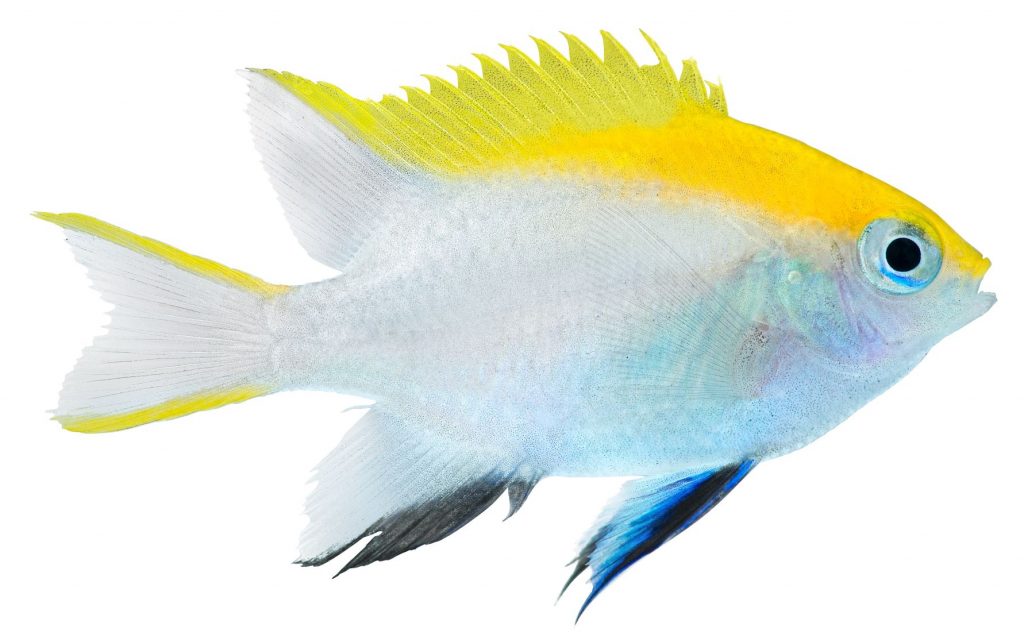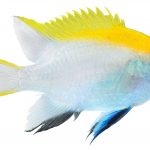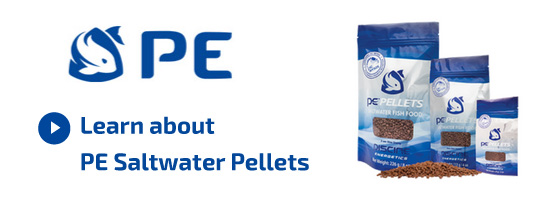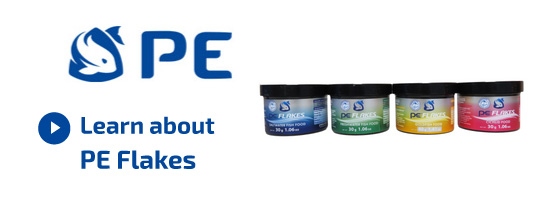Damsels Species
Damsels
Damsels are members of the Pomacentridae family, encompassing 29 genera and 385 species. Damsels are a commonly kept group of fishes due to their extremely hardy nature, low cost and bright coloration.
The Blue Devil Damsel (Chrysiptera cyanea) is one of the most commonly sold damsel species. Some other damsels often seen in the aquarium hobby are the Three Spot Damsel (Dascyllus trimaculatus), Four Stripe Damsel (Dascyllus melanurus) and the Yellowtail Damsel (Chrysiptera parasema).
Biology
Damsels are found in all the world’s oceans. Though many of the species represented in the aquarium trade come from tropical coral reefs, many damselfish species are found in temperate waters as well. They can range in size from 2” (5 cm) to 14” (34 cm).
Damselfish exhibit a wide dietary preference across species, with some species “farming” algae on the rocks within their territory. Other species are primarily zooplanktivores, consuming foods from the water column such as copepods and mysis.
Captive Care
Damsels make great aquarium inhabitants, provided their husbandry needs such as diet, water quality and tank space are met. One of the most important care considerations for damselfish is their temperament. Some species can become rather pugnacious in captivity, and it is important to keep this in mind when selecting tankmates for damselfish.
Most damselfish prefer a temperature range of 72F (22C) to 80F (26C), though some species such as the giant Garibaldi Damselfish (Hypsypops rubicundus) require much colder temperatures. It is always advisable to research the particular species you are considering keeping before purchase. Damselfish are generally considered reef safe as they do not harm corals or ornamental invertebrates.
It is important to consider carefully what species of damselfish may be best for your aquarium. While smaller species such as the Blue Sapphire Damselfish (Chrysiptera springeri) are suited to tanks as small as 10 gallons, larger species such as the Velvet Damselfish (Paraglyphidodon oxyodon) may be better suited to a larger aquarium.
Suggested Piscine Energetics Products
We suggest a diet based on Piscine Energetics Frozen Mysis, Piscine Energetics Frozen Calanus, Piscine Energetics Pellets (1mm and 2mm) and Piscine Energetics Saltwater Flakes.
What people are saying about PE:
After feeding my seahorses your mysis for about 3 months; they are fat and happy!!! they give me baby seahorses (at least 300 ) each 14 days... So I'm very satisfied of your mysis.The frozen mysis is about 70 per cent of their diet.
Yvan Charbonneau Quebec
I am keeping these Indian mudskippers -- very cute -- about 3-4 inches long. I've been feeding them frozen bloodworm, and decided to try them on mysis. I feed them in a "shallows" in the 150 I have set up for them. The minute the mysis hit the water they were on it, frozen and all. They gorged until their little bellies were almost bursting. I have yet to see an aquatic creature that does not go absolutely nuts over PE Mysis.
David Lass Massachusetts
I picked up my Mysis today and they arrived wonderfully. All the fish I fed them to, absolutely devoured them. They are my Frontosas new favorite food. All my Discus ate them up eagerly...heads and all!! I want to thank you again for your excellent service and product.
Pierre Brenton Nova Scotia
I have a large saltwater aquarium (220 gallons) with very expensive fishes and invertebrates. I tried to feed them with your PE Mysis and they really went crazy about it. Since that time, some of my fishes refuse any other product I offer them!







